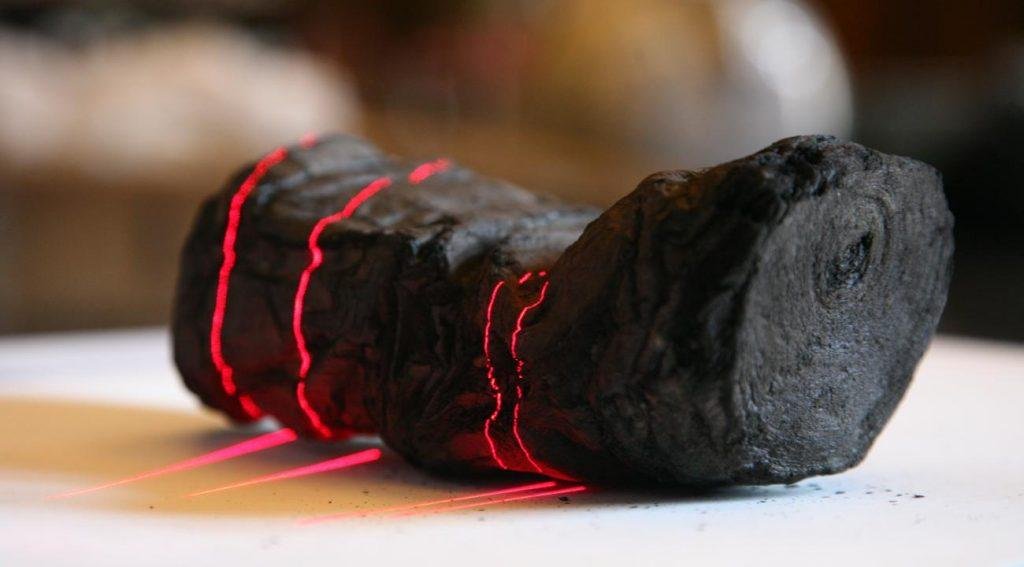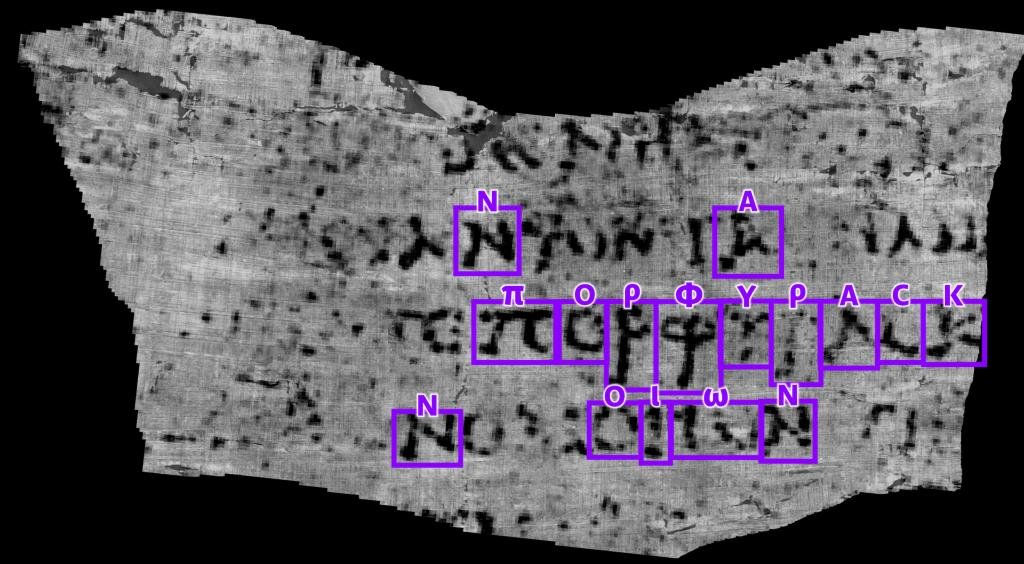A 21-year-old computer science student, Luke Farritor from the University of Nebraska-Lincoln, has emerged victorious in the Vesuvius Challenge, unlocking the mysteries of the ancient Herculaneum scrolls.
 Herculaneum scroll with laser lines being scanned at Insтιтut de France by Brent Seales and his team. Credit: EduceLab
Herculaneum scroll with laser lines being scanned at Insтιтut de France by Brent Seales and his team. Credit: EduceLab
These scrolls, carbonized during the eruption of Mount Vesuvius in 79 CE, have long eluded scholars due to their fragility, but recent advancements in artificial intelligence (AI) are bringing them to light.
The Herculaneum scrolls, discovered in the 1700s in a grand villa believed to have belonged to Julius Caesar’s father-in-law, have been a tantalizing enigma. Traditionally too delicate to unwrap, the scrolls have presented a unique challenge to researchers seeking to decipher lost ancient texts.
However, the Vesuvius Challenge, backed by Silicon Valley funding and led by Brent Seales, a computer scientist from the University of Kentucky, is revolutionizing our understanding of this unique historical artifact.
 Luke Farritor, a contestant in the Vesuvius Challenge, identified the characters that form the Greek word for “PURPLE.” Credit: Vesuvius Challenge
Luke Farritor, a contestant in the Vesuvius Challenge, identified the characters that form the Greek word for “PURPLE.” Credit: Vesuvius Challenge
The breakthrough came as Farritor successfully deciphered the first word from the scrolls, a monumental achievement in the quest to unveil the secrets of this intact ancient library. The word, “porphyras,” an ancient Greek term for “purple,” was identified using a machine learning algorithm developed by Farritor. This discovery has not only earned him a reward of $40,000 but has also opened the door to decoding the remaining 800 scrolls.
The Vesuvius Challenge, launched earlier this year, invited participants to employ AI and machine learning to unravel the scrolls without physically touching them. The use of 3D X-ray images, provided by Seales and his team, allowed contestants to navigate the challenging task of deciphering texts that have remained unreadable for over two millennia.
This breakthrough builds upon Seales’ previous success in using CT scans to virtually unwrap and read ancient scrolls, such as the En-Gedi Scroll in 2016. The unique challenge posed by the Herculaneum scrolls, with their carbonized state and charcoal ink, necessitated creative approaches. The AI-driven Vesuvius Challenge harnessed the collective power of over 1,500 research teams, fostering collaboration and innovation.
Farritor’s algorithm focused on subtle surface textures, known as ‘crackle,’ identified in the scans by another contestant, Casey Handmer. The crackle pattern was indicative of ink, leading Farritor to train his machine learning model to recognize and decipher the letters. The result was the revelation of the word “porphyras” and a significant leap forward in the deciphering process.
The discovery is not only a triumph for Farritor but also for classical scholarship. Federica Nicolardi, a papyrologist at the University of Naples Federico II, expressed excitement about the potential impact on our understanding of the ancient world. She emphasized that the preserved texts from the Library of Herculaneum are entirely unknown from other sources, offering the possibility of expanding the ancient canon.
Seales, reflecting on the collaborative effort, stated, “The Vesuvius challenge allowed us to enlist more than a thousand research teams to work on a problem that would normally have about five people working on it.” The ongoing challenge carries a grand prize of $700,000 for identifying four separate pᴀssages of at least 140 characters, motivating researchers worldwide to contribute to this groundbreaking endeavor.
Seales envisions that machine learning could unlock the “invisible library,” including texts in medieval book bindings, palimpsests, and ancient Egyptian mummy cases. Farritor, having already run his models on other segments of the scroll, anticipates the unveiling of many more characters in the quest to decipher the ancient library.





